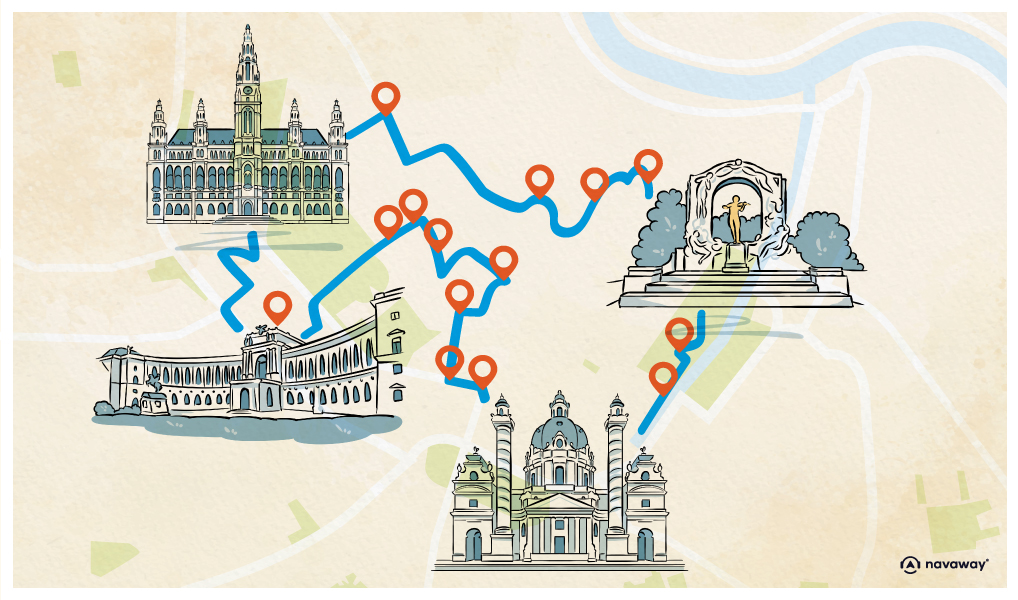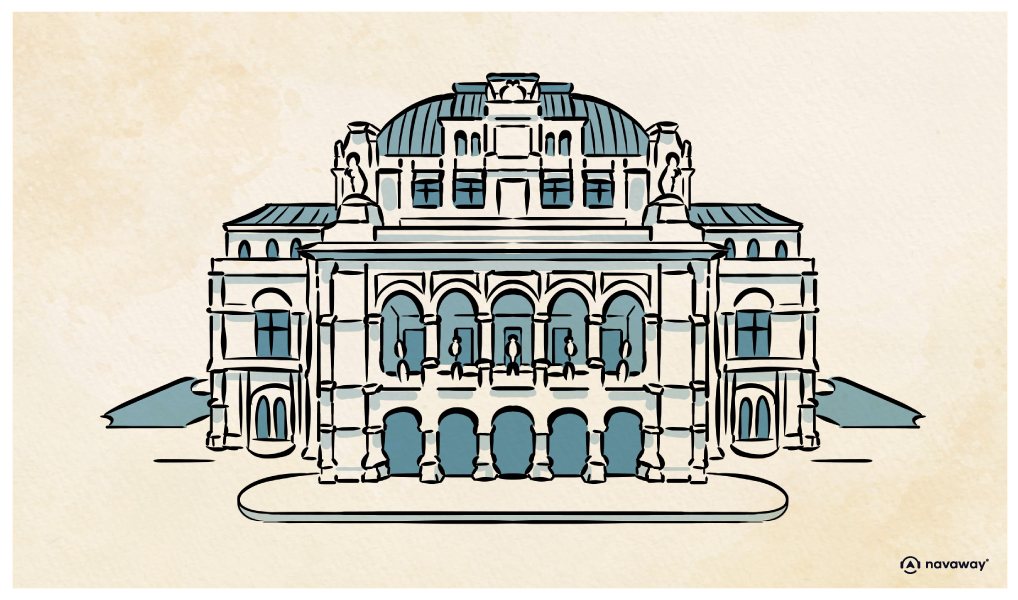
Vienna State Opera

This point of interest is available as audio on the tour: Visit Vienna, The Empress of Austria
Here is one of Vienna’s most iconic landmarks—the Vienna State Opera. You probably already know it as one of the greatest opera houses in the world, famous for its exceptional programme of different performances every day! From June to September, you can attend nearly 50 operas and 24 ballet performances—an unmatched variety of shows. In winter, the legendary Opera Ball takes place. It’s the most prestigious event of the ball season, where a hundred debutante couples open the evening in evening gowns and tuxedos. During April, May, June, September, and December, up to 80 performances are broadcast live for free on the square outside. If you’re hesitant about opera, this is the perfect way to try it out—no ticket needed! But for opera lovers, nothing compares to seeing a performance inside. The grand hall is a stunning Italian-style theatre with flawless acoustics. During intermission, you can step out and enjoy an incredible view over the city’s rooftops, beautifully lit up at night. The opera offers over 500 standing-room tickets for as little as €3. It’s one of the most affordable ways to experience this cornerstone of Viennese culture. You can also take a guided tour during the day to explore behind the scenes. You might wonder why Vienna is so deeply connected to music? Well, the Habsburg Empire was a mix of Germanic, Italian, and Slavic cultures, and Vienna quickly became Europe’s musical capital. The city’s first opera performance was held in 1625 at the Hofburg. The golden age came in the 18th century… Austria developed a rich musical tradition and became home to some of history’s greatest composers—Beethoven, Mozart, Strauss, Schubert, Wagner… all of them lived and composed in Vienna. Few places in the world can claim such a legacy. Back then, performances were held at the imperial court. The Vienna Opera dates back to 1810, when theatre and opera were split between two venues—the Hofburgtheater for drama and the Hof-Operntheater for opera and dance. The State Opera was one of the first major projects of the Ring, the circular boulevard surrounding Vienna’s old town. Construction began in 1861 and was completed to a performance of Mozart’s Don Giovanni. The building was named the Kaiserlich-königliche Hofoper—the “Imperial and Royal Court Opera.” In the 19th century, Vienna hosted numerous balls and festivities, paving the way for a lighter style of opera: the operetta. This was also the era of Gustav Mahler, who directed, modernised, and redecorated the opera house. He introduced contemporary works in the repertoire, and switched up old social customs—he’s the one who turned the conductor’s back to the audience and insisted the theatre be dark during performances. In 1920, Austria became a republic and the opera was finally given its current name: the Vienna State Opera. Sadly, the bombings of 1945 left the building destroyed, but the façade was walled off in advance, and survived intact. It was reconstructed during difficult economic times, and was largely funded through private donations and a collaboration with the Soviet Union, which provided building materials, like wood that further enhanced the acoustics. The Vienna State Opera reopened in 1955 with a performance of Beethoven’s Fidelio, attended by important guests from Austria and abroad—and broadcast live on television for the very first time. A legend reborn, where history, music, and emotion continue to take centre stage.


Discover Vienna with app
An interactive guide through the most beautiful streets, squares, and districts
26 fun audioguides full of historical facts, anecdotes, and legends


Comments